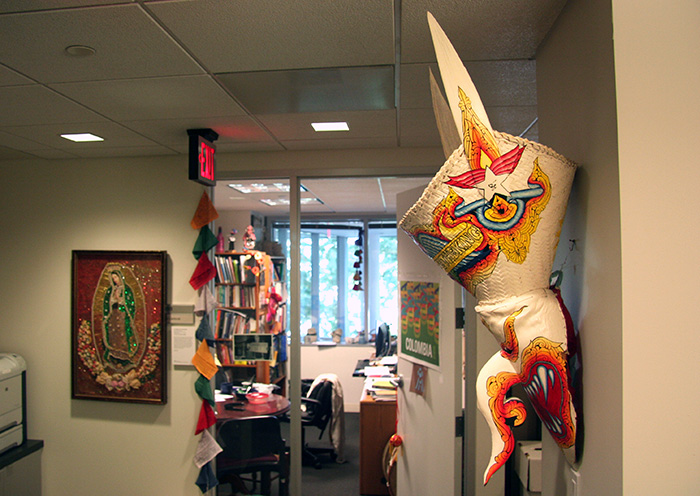Although not a Smithsonian museum, the Center for Folklife and Cultural Heritage has become the repository for unique, culturally significant objects gifted by participants of the Smithsonian Folklife Festival over the last forty-nine years. These objects have found homes in our office, preserving the memories of their makers’ and users’ experiences at the Festival.
Due to the unofficial nature of our collection, these pieces have not been consistently catalogued, and as the staff members who worked on particular programs move on, pieces without records can become mysteries. The story of one Thai mask is an example of the journey required to rediscover the lost stories behind some of our wonderful objects.
Although no one remembered working on a Festival program that featured that type of mask, we assumed it was from the 1994 Thailand program. The 1994 program book even listed a Thai mask maker, part of the popular khon dance drama tradition. That year, the National Mall was the scene of many khon performances using both dancers and puppets. While our mask did not look as elegant as the ones used in those performances, we thought it may have been a more traditional khon mask. I searched for images of the mask in our digital photo archives from 1994 but was sorely disappointed.

Later that afternoon, while looking for photos of fish traps from the 2007 Mekong River: Connecting Cultures program, I found something similar to our mystery mask as part of a children’s activity, held up by a young, smiling Thai man in regalia. Reexamining the mask for clues, I found a name on the side that had previously gone unnoticed: Wirayut. Plugging “Wirayut” into Google, I found that it had no translation into English, was not a place, and was most likely a Thai first name. Sure enough, the list of participants in the 2007 program book included one Wirayut Natsaengsri. The name was a signature!

Unfortunately, the program book did not contain any information about Thai mask making or khon dance drama that showed the use of such a mask. In fact, the more I delved into research on the khon dance, the more I became convinced that the mask in our collection was unrelated. Finally, I was led to a file of fieldwork that confirmed that our mask was part of a different tradition from northeast Thailand: the Phi Ta Khon festival.
Phi Ta Khon, or Ghost Festival, is a three-day Buddhist holiday that takes place in different parts of Dan Sai in the Loei Province of Thailand every year between late May and early July. People of the area believe that when the last reincarnation of Buddha returned to town, the celebrations were so loud that they woke the dead, who joined the celebration. On the first and second days of the festivities, people in frightening, ghostly masks parade through the streets.
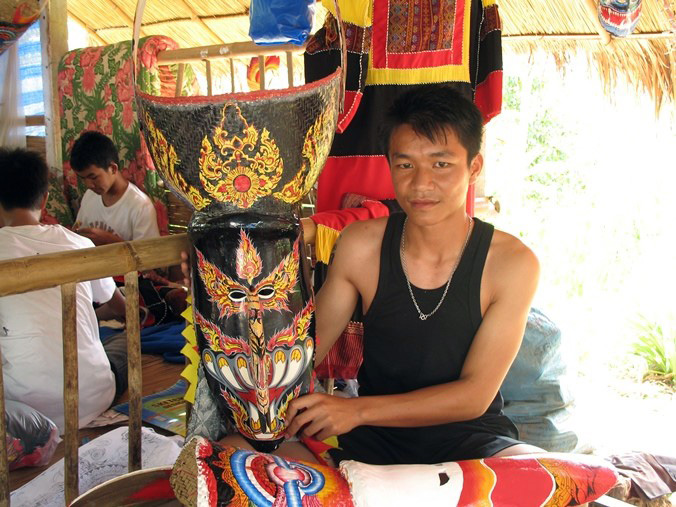
Men like Wirayut begin making their masks in early May, usually working until a few days before the festival begins. Traditionally, after the parades on the second day, people would throw the masks into the Nam River. Nowadays, they are sold to tourists or added to the collection in the Ponchai Temple in Dan Sai.
Wirayut was invited to demonstrate his mask making skills at the 2007 Folklife Festival when he was only nineteen years old, already with eight years of experience. He was known as one of the best mask makers in his group back home.
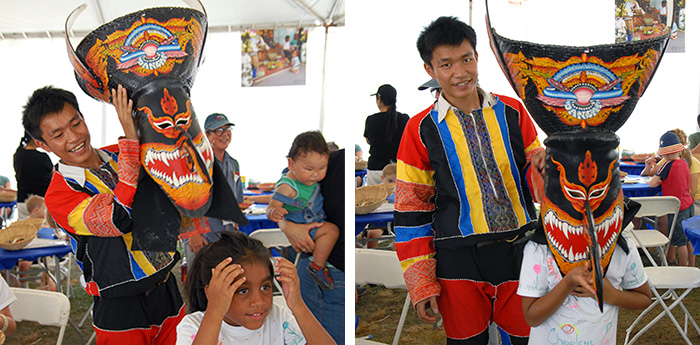
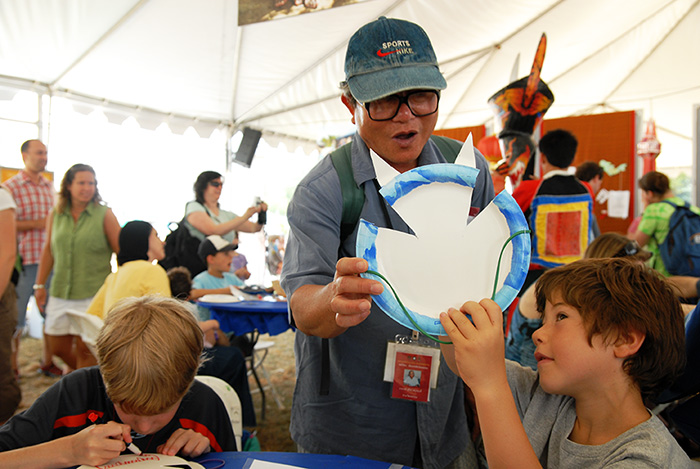
Festival activities coordinator Kim Stryker remembers Wirayut as a happy, energetic young man who worked really well with young visitors, guiding them as they made paper-plate versions of his masks, despite not knowing English.
Digging further into fieldwork, I found more information about the mask making process along with images of Wirayut and his group making masks in Thailand.

Our latest discovery came when we visited Mekong program curator Frank Proschan. Program specialist Arlene Reiniger pulled out some materials from that program for Frank to identify. We instantly recognized the raw materials for another Phi Ta Khon mask.
Wirayut and his fellow Phi Ta Khon mask maker left the National Mall over nine years ago, but the man behind the mask has just been revealed. His voice and story have been restored to the mask and will live on in the Folklife office collection.
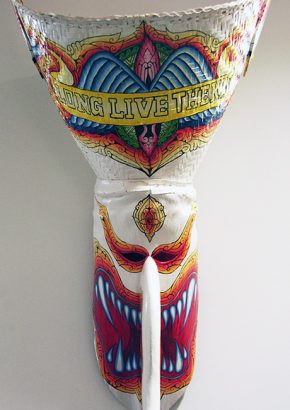
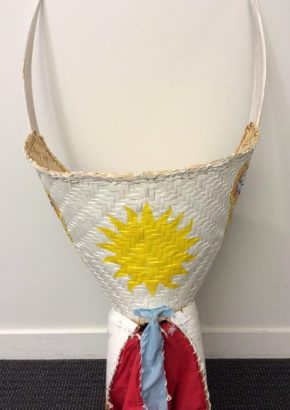
Michelle Ibarra is a Katzenberger Intern at the Center for Folklife and Cultural Heritage researching material culture from the Smithsonian Folklife Festival. She is a student at Florida State University majoring in art history with minors in museum studies, anthropology, and history.


